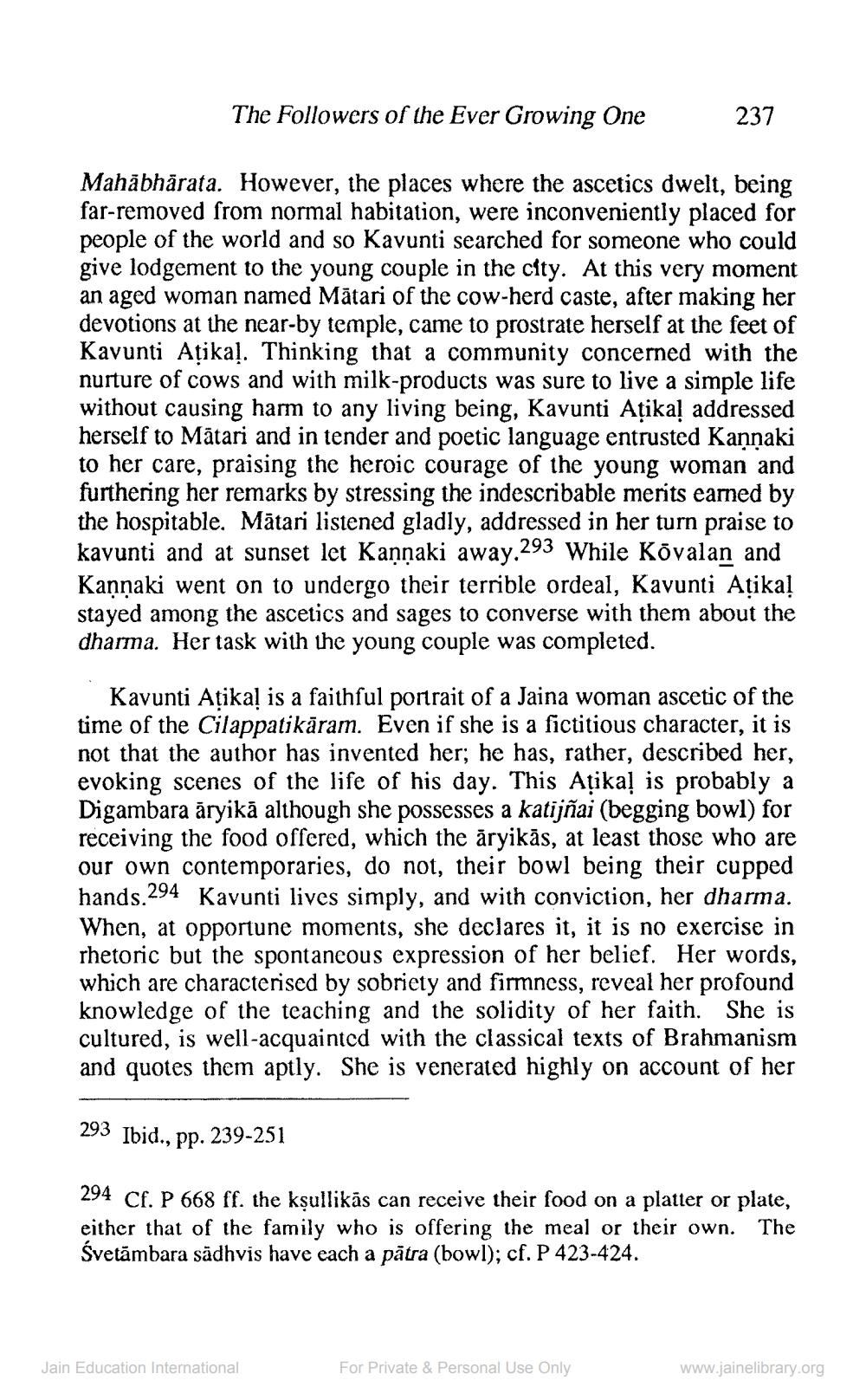________________
The Followers of the Ever Growing One
Mahābhārata. However, the places where the ascetics dwelt, being far-removed from normal habitation, were inconveniently placed for people of the world and so Kavunti searched for someone who could give lodgement to the young couple in the city. At this very moment an aged woman named Mätari of the cow-herd caste, after making her devotions at the near-by temple, came to prostrate herself at the feet of Kavunti Atikal. Thinking that a community concerned with the nurture of cows and with milk-products was sure to live a simple life without causing harm to any living being, Kavunti Ațikal addressed herself to Mätari and in tender and poetic language entrusted Kannaki to her care, praising the heroic courage of the young woman and furthering her remarks by stressing the indescribable merits earned by the hospitable. Mātari listened gladly, addressed in her turn praise to kavunti and at sunset let Kannaki away.293 While Kōvalan and Kannaki went on to undergo their terrible ordeal, Kavunti Atikal stayed among the ascetics and sages to converse with them about the dharma. Her task with the young couple was completed.
Kavunti Atikal is a faithful portrait of a Jaina woman ascetic of the time of the Cilappatikāram. Even if she is a fictitious character, it is not that the author has invented her; he has, rather, described her, evoking scenes of the life of his day. This Ațikaļ is probably a Digambara äryikā although she possesses a katījñai (begging bowl) for receiving the food offered, which the āryikās, at least those who are our own contemporaries, do not, their bowl being their cupped hands.294 Kavunti lives simply, and with conviction, her dharma. When, at opportune moments, she declares it, it is no exercise in rhetoric but the spontaneous expression of her belief. Her words, which are characterised by sobriety and firmness, reveal her profound knowledge of the teaching and the solidity of her faith. She is cultured, is well-acquainted with the classical texts of Brahmanism and quotes them aptly. She is venerated highly on account of her
293 Ibid., pp. 239-251
294 Cf. P 668 ff. the kṣullikäs can receive their food on a platter or plate, either that of the family who is offering the meal or their own. The Śvetämbara sädhvis have each a patra (bowl); cf. P 423-424.
Jain Education International
237
For Private & Personal Use Only
www.jainelibrary.org




